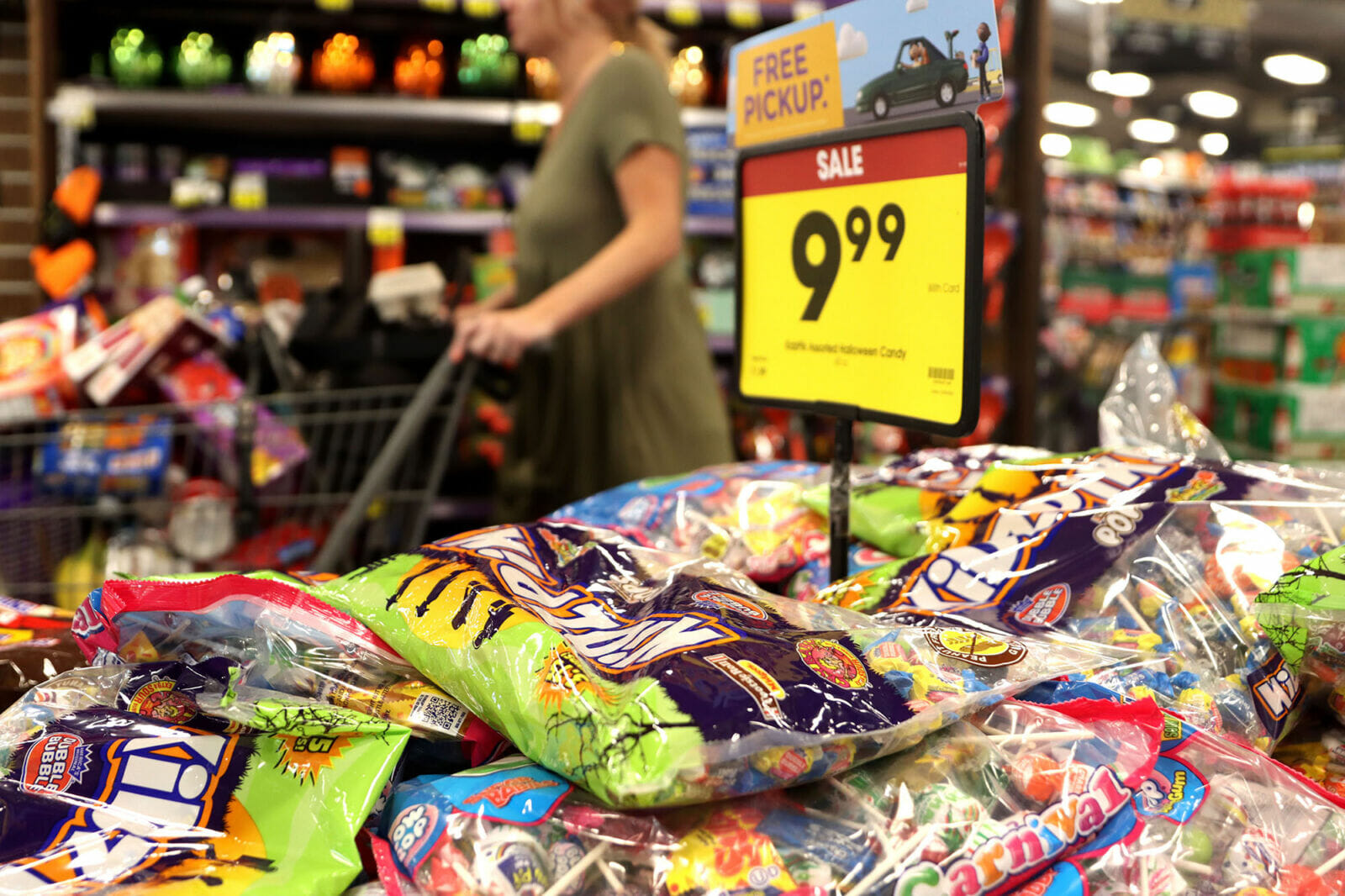The only thing scarier than ghosts, ghouls and goblins this Halloween may be the rising costs and prices for candy, costumes and pumpkins.
Candy is up 13% over last year, according to the Bureau of Labor Statistics, and pumpkins were also about 13% costlier in the Southwest by mid-October of this year compared to last, according to U.S. Department of Agriculture data.
While the BLS does not track costume costs, it does say that apparel costs generally are up 5.5% from last year – and one costume shop owner reports paying a lot more.
READ ALSO: Ranking Arizona: Top 10 best places to live for 2022
READ ALSO: 2 Metro Phoenix cities among Top 20 best cities for families
It’s not surprising given inflation all through the economy, one expert said.
“Halloween is a unique once-a-year event, but it’s not immune to the same inflationary pressures that the rest of the consumer economy is experiencing,” said Garrick Taylor, executive vice president of the Arizona Chamber of Commerce and Industry.
Rising prices, coupled with a post-pandemic surge in interest in Halloween, will likely send holiday sales to a record-breaking $10.6 billion this year, according to a National Retail Federation survey of 8,283 people.
The largest chunk, $3.6 billion, will be spent on costumes, according to the NRF survey, which said an estimated $700 million of that is expected to go to pet costumes.
Angela Ott, the owner of Fun Costumes, a small family-owned shop in Mesa, said she has seen wholesale prices for costumes she buys go up this year, while the quality has gone down.
“We’re not talking nickel and dime,” she said. “We’re talking for costumes, anywhere from about eight to 10 bucks, which is my markup for my customers.”
The NRF survey said the most popular kid’s costumes this Halloween are Spider-Man, a princess and a witch, while adults prefer witch, vampire and ghost, in that order. For popular costumes like Spider-Man and other superheroes, Ott said prices can range from about $36 to $48 in her store.
Ott and other retailers said they have had to raise prices to keep pace with the increase in costs. That’s what is happening to Reese Walford, the owner of Candy Addicts in Tempe, who said he has also had to raise prices to cover higher costs for his inventory.
“We pay more for candy and we have to sell for more to continue with the same profit margin,” he said. But Walford hopes it’s not that way for long. He joked that no one wants to pay a lot for candy.
“We want cheap candy,” he added.
Costs of have gone up for another Halloween staple, but at least two Arizona farms said they are holding the line on the retail price of pumpkins this year.
On Mortimer Farms in Dewey and Apple Annie’s Orchard in Wilcox, pumpkins prices have not gone up despite higher costs for seeds, water, fertilizer and labor. Both farms hesitated to raise pumpkin prices, opting to increase admission costs, fruits and vegetables, or other products instead.
“Pumpkins are the only thing that we haven’t raised our prices with,” said Ashlee Mortimer, chief marketing officer at Mortimer Farms. “We’re almost biting the bullet and saying, ‘OK, we’re not going to make money on pumpkins.’”
That was echoed by Mandy Kirkendall, the manager and director of fun at Apple Annie’s Orchard.
“We have had to raise some other prices,” Kirkendall said. “We raised vegetables, pies and doughnuts.”
The NRF survey said that 69% of Americans plan to celebrate Halloween, up from 65% last year. The increase in participation helps offset a slight drop in spending, with the average amount falling from $102.74 per person last year to $100.45 this year.
Cost-conscious consumers who want the trick-or-treat without the sticker shock have options, if they are a little creative.
“One thing that you could save on is making your own costume at home or going back to a sheet with cut-out holes,” said Lee McPheters, an economics professor at Arizona State University’s W.P. Carey School of Business.
Taylor said saving on candy may be as simple as buying the “generic candy corn over the brand-name candy bars.”
A Candystore.com analysis of sales showed that the top three candies in Arizona are Hershey Kisses, Hot Tamales and Snickers, while the top three nationally are Reese’s Cups, Skittles and M&M’s.
McPheters does not think the high inflation and higher Halloween costs will be enough to dampen people’s urge to go out and spend for Halloween.
“There is a feeling across the board in the economy that it’s time to get back to normal,” he said. “The stage is set for a booming Halloween.”




